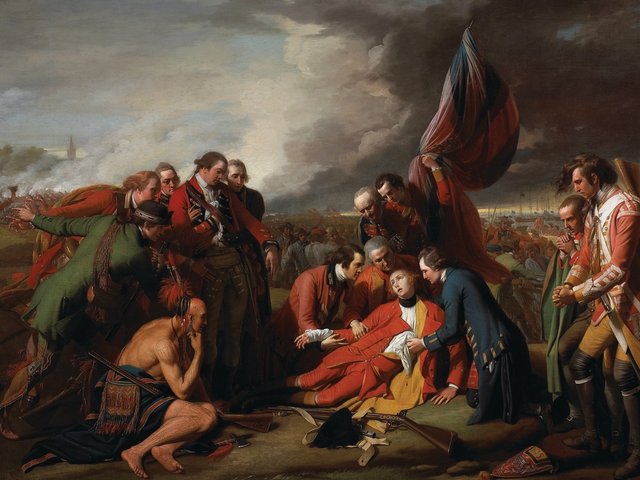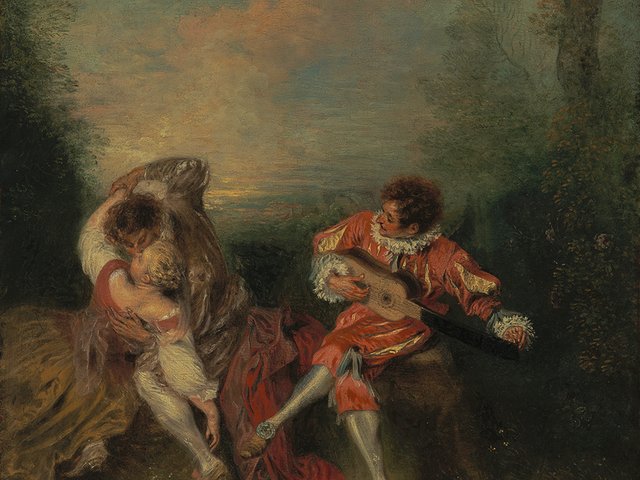Christian Michel’s L’Académie royale de peinture et de sculpture is the most original and well-researched monograph to have appeared on this subject, one steeped in the procedural, institutional and doctrinal history of the Académie royale over its 145-year history. Incorporating (and going beyond) the archival work of late 19th-century historians of the Academy—and giving due recognition to Jean Locquin’s and Pierre Marcel’s pioneering surveys of French art of the Ancien Régime—Michel’s study builds on recent scholarship of the documentary and interpretative kind. His book reviews the origins, development and establishment of the Académie royale from its tentative beginnings in 1648 and ends with a close reading of the demise of the Academy between 1789 and 1793.
Training over teaching
Michel is interested in painters primarily, but he includes sculptors and engravers in his case studies, and is authoritative on the role of theoreticians, critics and writers of the arts. While he rejects the notion of rehabilitating the Academy in any utopian sense, he argues for an institution whose primary concerns were with pedagogy and training; whose leaders were committed to establishing and maintaining excellence in the French school and whose ambition was to create a liberal status for artists and the means for their professional (and material) advancement. Michel insists repeatedly on the absence of any clearly articulated academic doctrine that sought to impose stylistic unity on its members. He returns often to Philippe de Champaigne’s notion of “the agreeable diversity of manners” encouraged by the institution and to the Academy’s reluctance to impose “an absolute artistic model”.
The first section of this book traces each period in the Academy’s history through a series of nuanced “micro-histories” in which the relationships between ministers, officials, and academicians are set against the changing material fortunes of the monarchy and the consequences (after 1737) of the establishment of a biennial Salon and the burgeoning market for contemporary art in Paris. For each period, Michel offers abundant insights into the workings of the Academy, the importance of personalities and rivalries, the relative authority of individual history painters, government officials and amateurs.
To take some examples from different periods: Michel stresses how performative was the alliance between Antoine de Ratabon and Charles Errard in establishing the claims of the fledgling Academy over the more powerful Maîtrise before the arrival of Colbert (and the subsequent ascendancy of Le Brun). He throws new light on the contributions of two premiers peintres, Antoine Coypel and Louis de Boullogne, in shaping pedagogy and aesthetic doctrine in the first decades of the 18th century. Michel reinstates Charles-Antoine Coypel’s influence, notably in promoting the model of the cultivated and mondain Academician. Michel is particularly astute on the reforms undertaken during the tenure of Abel-François Poisson de Vandières, marquis de Marigny, particularly the efforts made to stimulate a more vigorous school of history painters and monumental sculptors. His best chapter is devoted to the successful realisation of these policies under Charles-Claude Flahaut de la Billaderie, comte d’Angiviller and Jean Baptiste Marie Pierre, in which he argues that the imposition of biennial commissions of history painting and monumental sculpture to be shown at the Salon was a ministerial objective rather than a fundamental part of the Academy’s agenda.
The second half of this study begins with tracing the origins and longevity of what might be termed the anti-Academic rhetoric, nurtured by Voltaire and his fellow philosophes and enshrined in the Encyclopédie: an orthodoxy that still infiltrates almost every recent study of late 17th- and 18th-century French art. In contrast to this overwhelmingly negative view of the Academy, Michel reviews the Academy’s role in shaping the production of living artists. Michel’s insights are deliberately provocative, as is his argument that the Academy encouraged its members to give form to their individual genius—with Jean-Antoine Watteau as the institution’s most “emblematic” product.
Talent over theory
This is consistent with Michel’s strongly argued vision of the Academy as a body concerned primarily with maintaining the highest standards in training and production, less committed to the hierarchy of genres and recognising a more general distinction between “universal” and “particular” talents. Consequently, Michel’s Academy is an institution that encouraged a range of styles and genres, in which “councillors” could be recruited from the ranks of portraitists, still-life painters, and even painters of the fête galante.
The most interesting and original section of the second part of this book is Michel’s discussion of what might be termed “word and image” under the Academy. He makes very clear that the discourses of writers on aesthetics, theoreticians, and after 1750, art critics, were quite distinct from the ideas and doctrines enshrined in the Academy, always more interested in art theory as a discourse on—and guide to—actual practice. Michel establishes that beyond the codification of the passions, established by Le Brun, the Academy’s governing aesthetic standard, articulated by Roger de Piles but most cogently by Antoine Coypel, was a desire for what might be termed graceful verisimilitude. The Platonic and idealistic strain of Enlightenment aesthetics, championed by Anton Raphael Mengs and Johann Joachim Winckelmann, was entirely at odds with Academic doctrine that supported a cultivated and learned art, but one fundamentally attached to nature.
o Christian Michel, L’Académie royale de peinture et de sculpture (1648-1793)—La naissance de l’Ecole française, Librairie Droz, 424pp, €59.81 (pb); in French only
Originally appeared in The Art Newspaper as 'A far from academic set-up'



